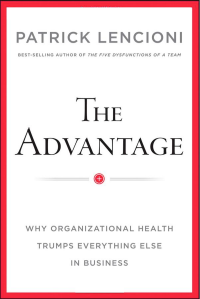The CI Vaccine
It’s probably fair to say that most folks have had little to zero experience of Continuous Improvement (CI) at work.
Let’s use the analogy of a vaccination to explore what it might mean for an organisation to first dip its toes in the CI waters.
When an organisation adopts CI, it’s essentially attempting to boost its immunity to germs like waste, rework, quality problems, inefficiencies, and the pernicious effects of trying to do business-as-usual in an ever-changing world (a.k.a. the status quo). In principle, the antibodies to these germs, arising from the introduction of CI, should stay with the organisation for a long time.
Understanding CI
First off, there’s the question of whether people understand what CI is about, what it’s going to mean for their organisation and their work, and whether they even need to know. I can still remember being vaccinated at school, many years ago now. Standing in line in a draughty corridor, half-dressed, waiting for a “vaccination” – something that no one had explained to us, apart from the fact that it involved a needle, a (probably) painful injection, and a bonbon. And that it was compulsory.
Selling CI to the Workforce
Change specialists, and some managers, often take this stage for granted. Their relative familiarity with the principles of CI can blind them to the possibility that other folks don’t know what CI is, what the implications may be, and how it’s going to be introduced. All too often it’s assumed that CI is so obviously “a good thing” that people will jump at the chance to help adopt it and make it work. Generally, nothing could be further from the truth.
Resistance and Avoidance
As (yet) another management change initiative, folks are likely to be at best skeptical, and more often downright hostile (in an understated, job-preserving, passive-agressive way). Some parents reject vaccinations for their children, after all, despite the best medical advice.
Life with CI
Another aspect of CI rarely considered is the way in which it changes employee participation and collaboration. It’s very hard to realise any benefits from CI unless and until folks are intimately involved in spotting the dysfunctions in their ways of working, and in finding or helping find solutions or improvements. Yes, introducing CI can be driven by management edict, but at some point that approach has to give way to consultation and collaboration for CI to deliver its real benefits.
Steps
Here are the steps that you might like to consider when approaching the introduction of CI into an organisation.
- Introduce the idea of Continuous Improvement to folks across the organisation, along with the new elements of vocabulary inevitably required.
- Discuss, or at least communicate, the reasons for (the likely benefits of) its introduction.
- Help people understand the timeline for CI’s introduction, the scope of the likely changes, and the names or job titles of the folks likely to be involved.
- Share the practical day-to-day changes its introduction is likely to bring to the organisation and the people working in it.
- Discuss the possible knock-on effects for e.g. suppliers and customers.
- Make an effort to understand people’s reservations and their buy-in to the whole idea of continuous improvement – do they think there’s any point to it?
- Consider and share the impact CI might have on existing standard processes and procedures.
- Tell people how they’re going to have time to learn about and then implement this stuff alongside the demands of their normal day job.
- Explain how things are going to get worse for a time, whilst the CI changes bed-in.
- Make it clear that each and everyone’s participation is voluntary, not compulsory.
Whether all this information is “pushed” at the workforce in e.g. briefings, emails, workshops or one-to-ones, or whether there’s more dialogue and debate, will be a question of the cultural norms already in place in the organisation in question.
Typically, we’ll automatically trust someone in a white coat (like a doctor or a nurse). Trust in the folks involved in “pushing” the CI implementation can help things go smoother. (Absence of trust can make the whole thing more difficult).
[Update: 20 October 2014]
Recent neuroscientific research suggests that trust is not as important for the introduction of change as we may have thought. Rather more important, it seems, is normative learning a.k.a. experiential learning. The argument, in a nutshell, is that if someone experiences the postitive impact of an improvement – an improvement they have chosen to try out for themselves – then they are likely to adopt that improvement, long term. And place more trust in the person who suggested it, too. See: Changing Behaviours.
And like a vaccination, there’s the possibility that the patient is going to feel a little unwell for a while, after taking the needle.
How about you? Do you think your organisation needs CI? Or is the status quo good enough?
– Bob
Further Reading
What is a Vaccine and How Does it Work? – Online article
How to Make Change Happen – Theory Of Constraints on implementing change
Kotter’s Eight Step Change Model – Online article

























